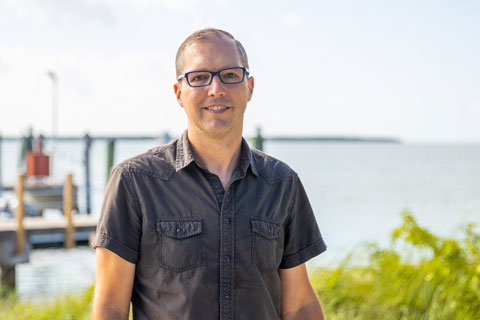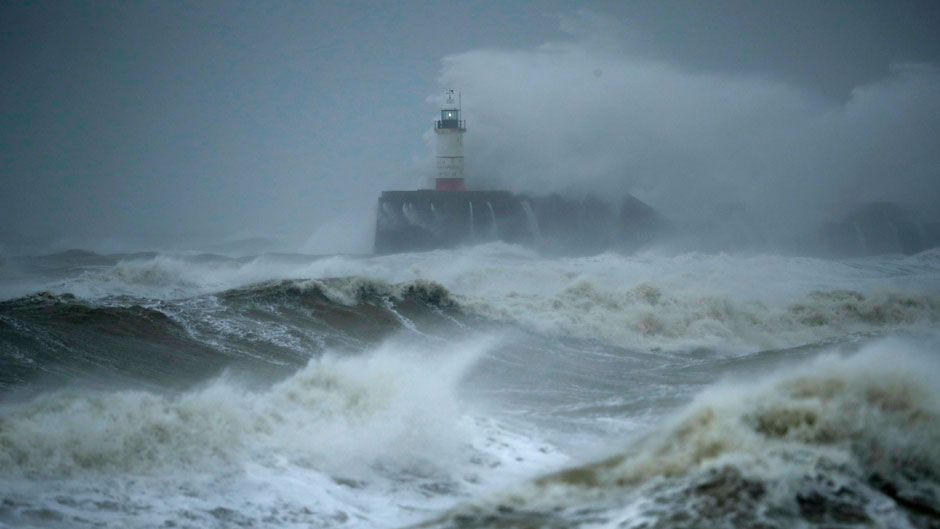The headlines read like something right out of an apocalyptic novel, conjuring images of annihilation and destruction: historic bomb cyclone crashes into coast; record-smashing bomb cyclone wreaks havoc in the Northeast; bomb cyclone knocks out power to hundreds of thousands of homes.
So, what exactly is a bomb cyclone? The doomsday-sounding term has everything to do with weather. Simply put, it is a storm that intensifies very rapidly, and over the past few days, the North Atlantic has been producing one right after another.
A new powerful bomb cyclone, which the U.K. Meteorological Office has named Storm Dennis, is currently barreling eastward, taking aim at northwestern Europe this weekend—only days after Storm Ciara lashed several countries with high winds and torrential rains, killing at least eight people.
Bomb cyclones can be greatly enhanced by interactions with nearby jet streams, bands of strong wind that generally blow from west to east across the globe. This past weekend, a powerful jet stream helped a British Airways Boeing 747-400 set a record for the fastest subsonic flight from New York to London, flying from Kennedy International Airport to Heathrow in just under five hours.
 Brian McNoldy, a senior research associate and tropical cyclone expert at the University of Miami’s Rosenstiel School of Marine and Atmospheric Science, explains the weather phenomenon.
Brian McNoldy, a senior research associate and tropical cyclone expert at the University of Miami’s Rosenstiel School of Marine and Atmospheric Science, explains the weather phenomenon.
Why are they called bomb cyclones?
A bomb cyclone was originally a slang term used to describe an extratropical cyclone that strengthened quickly—a concept similar to a rapidly intensifying tropical cyclone (e.g., hurricane). This term has been in use for about 80 years but was popularized and formalized 40 years ago when it entered the published literature. According to one of the authors of the paper “Synoptic-Dynamic Climatology of the ‘Bomb,’ ” which published in the October 1980 issue of the American Meteorological Society’s Monthly Weather Review, they called it a bomb because it develops “with a ferocity we rarely, if ever, see over land.” Another term used to describe this is explosive cyclogenesis (rapid formation and development of a cyclone). To officially qualify as a bomb, the central pressure of the low must fall at least 24 millibars in 24 hours at 60 degrees latitude, or 14 millibars in 24 hours at 30 degrees latitude.
How are they different and similar to hurricanes?
Bomb cyclones are just rapidly intensifying extratropical cyclones; there is not really a handy equivalent term for a rapidly intensifying tropical cyclone. Extratropical cyclones are commonly found in the middle and high latitudes (hence the term “extratropical”), while tropical cyclones are commonly found in the tropics and subtropics. They gain their strength through interactions with strong upper-level winds and big temperature gradients. Extratropical cyclones have features such as cold fronts and warm fronts attached to them, while tropical cyclones do not. The strongest winds associated with extratropical cyclones are found well above the surface, while they’re very near the surface with tropical cyclones. They are similar in that they are both potent and dangerous low-pressure systems that can cause great damage with strong winds, storm surge, huge waves, and heavy precipitation.
Where and during what time of the year do bomb cyclones mostly form?
They are almost exclusively a winter phenomenon (in either hemisphere), and they can be found generally in the 30-degree to 55-degree latitude bands. In the Northern Hemisphere, “bomb season” extends from approximately October to April, with December-January-February as the peak. Compare that to our hurricane season, which runs from June through November, with August-September-October as the peak.
What role do powerful jet streams play in driving them?
Unlike hurricanes, extratropical cyclones can be greatly enhanced by interactions with nearby jet streams. That same encounter would obliterate a hurricane.
Can they occur in the United States?
Yes, though almost entirely near and off the mid-Atlantic and Northeast Coast.

